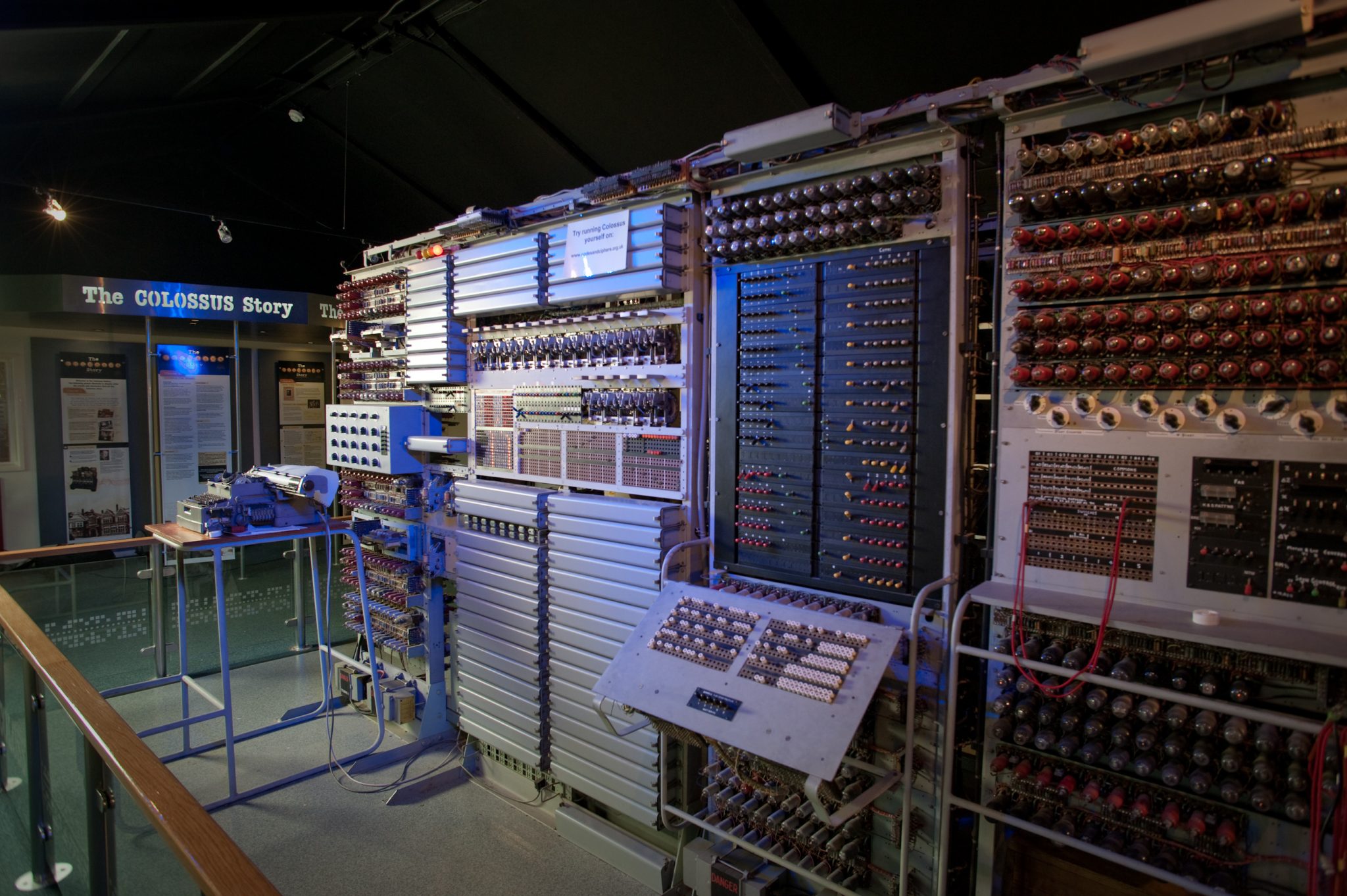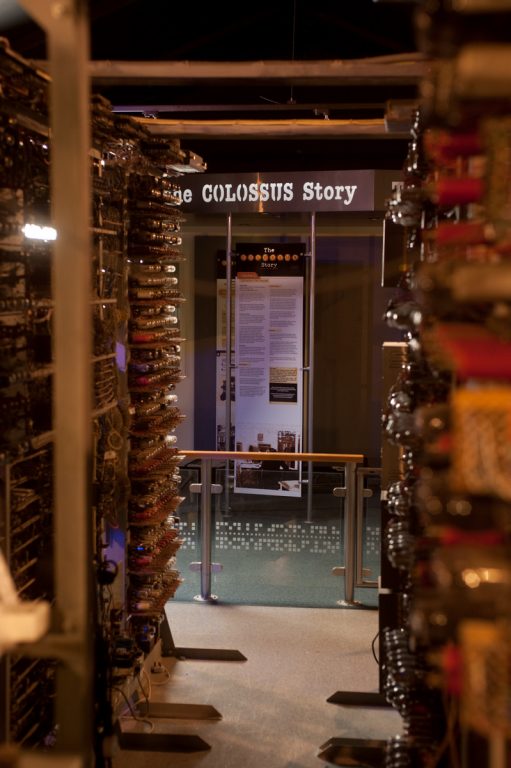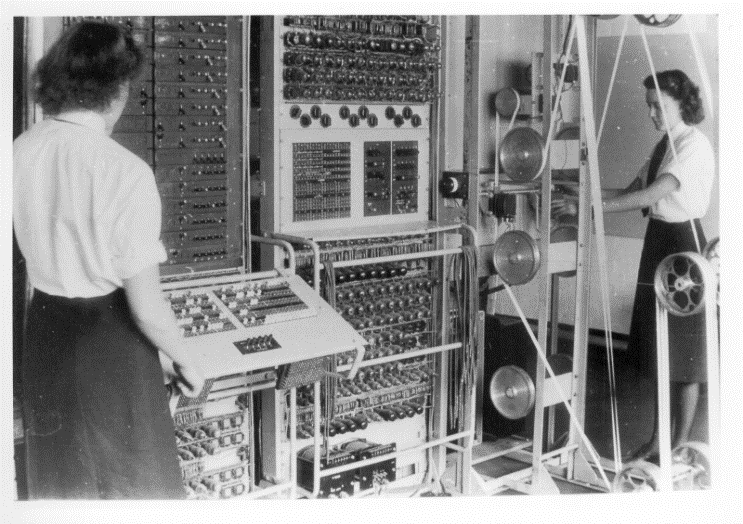
Colossus and Bletchley Park not only helped win the Second World War, but also helped kick start modern computers.
Computing has come a long way in the 75 years since Colossus – the world’s first electronic digital computer – became operational on 1 December 1943. Colossus started out as a military secret, and today its tech descendants, like the smartphones in our pockets, are everywhere.
These five facts about Colossus show how much has changed in the world of modern computing:
1. Colossus was designed as a code-breaking machine – and revealed vital intelligence that aided the D-Day landings at Normandy
We’re used to thinking of computers as general purpose machines, but Colossus was designed to perform a specific military function. A team at Bletchley Park, led by British engineer Thomas H. Flowers, built Colossus to crack coded messages sent between Hitler’s High Command and German military leaders in occupied Europe. The cipher used, the Lorenz, was more complicated than the Enigma.1 Colossus uncovered vital secrets that aided the D-Day landings at Normandy, by revealing that Hitler had been tricked into believing false information about the true location of the Allies’ planned invasion on 6 June 1944.
2. Colossus’s existence remained a secret until 1975
Given Colossus’s purpose, it’s no surprise that it was a closely held secret. In fact, Colossus’s existence remained unknown to the public for 32 years, mostly because during that time the codes were still in use by British security services, according to Bletchley Park historian B. Jack Copeland.2 The Bletchley Park team who worked on Colossus helped protect its secrets, and even after the war ended, many did not reveal the role they had played to friends and family. Ken Myers, who was part of the Colossus team, waited until the 1970s to share its story with his wife. It was not until October 1975, when the British Government released photographs of Colossus, that its existence became public.
3. Colossus weighed at least a ton and took up an entire room
These days, computers are designed to be light and portable, but the Colossus – as its name suggests – was a massive machine. It relied on around 1,500 vacuum tubes for its processing power, almost double the number of valves used by ACE, one of the first post-war computers in the UK.3 Colossus was programmed using switches, wheels and plugs, and German messages were fed into it via punched paper tape inputs that were capable of tackling 5,000 characters per second.

4. Colossus was created to speed up data analysis of codes – and was fast for its time
Thanks to Colossus, it took just hours instead of weeks to complete the calculations needed to break German codes. In order to speed up the calculations further, Flowers and his team built more Colossus machines. The original Colossus Mark I was replaced by Colossus Mark II, which began working on 1 June 1944, just five days ahead of D Day. This new machine used 2,400 vacuum tubes – 900 more than Mark I – and was about five times faster.3 By the end of the war, there were 10 Colossus machines.
In 2007, a replica Colossus that British engineer Tony Sale and his team built took part in a global Colossus Cipher Challenge. It succeeded in breaking the Lorenz code in just 3.5 hours – but the winner cracked the code in 46 seconds, using a PC!
5. Colossus needed entire teams of people to operate its machinery

Besides mathematicians and engineers, Colossus needed teams of operators to work its machinery. These were servicewomen from the Women’s Royal Naval Service (Wrens). A Senior Wren served as Chief Operator.
More than 500 people working with ten Colossus computers had deciphered about 63 million characters of secret German communications by the time the war ended.
Computing in an increasingly connected world
Unlike Colossus, which had to be kept hidden away from the rest of the world, computers today are all about connections. We rely on our devices to keep in touch with friends, family and the world around us. Speed is paramount, which is why technologies like full fibre and 5G, the next generation of mobile communications, are critical. These technologies will pave the way for new innovations descended from Colossus, but designed for the digital age.
Notes
- Photographs of Colossus courtesy of the National Museum of Computing.
- Sources:
- G. O’Regan, “The First Digital Computers”, Introduction to the History of Computing
- B. Jack Copeland and others, Colossus: The Secrets of Bletchley Park’s Codebreaking Computers
- B. Randell, “Colossus: Godfather of the Computer” in The Origins of Digital Computers

![Falling Dripping Water Drop[Adobe Stock] Falling Dripping Water Drop[Adobe Stock]](https://www.vodafone.co.uk/newscentre/app/uploads/2024/04/Falling-Dripping-Water-DropAdobe-Stock.jpg)


![Dawlish Sunrise [Adobe Stock] resized stock photo of Dawlish in Devon](https://www.vodafone.co.uk/newscentre/app/uploads/2024/04/Dawlish-Sunrise-Adobe-Stock-resized.jpg)